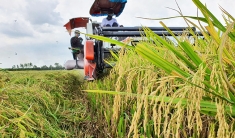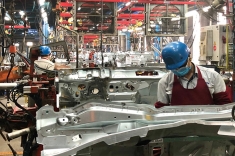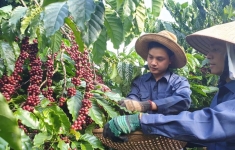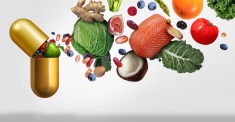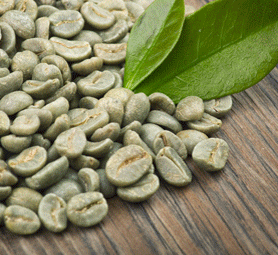
Administrator
Thank you to visit our website, for all the question please contact the administrator - General economic department.
Email: info@mascopex.com
Industrial development vital for Mekong Delta
Monday, 19 September 2022 13:12Agriculture has been the key economic pillar of the Mekong Delta, and as such, development policies for the region over the years have been designed to bolster agriculture. However, this foundation is becoming weak.
A sinking foundation
Agricultural growth has slowed down since 2005. Between 2001 and 2010, agricultural growth averaged out at over 7% a year, but this growth rate fell by half in the following 10 years, at only 3.5%. The proportion of agriculture in gross regional domestic product has shrunk, and the Mekong Delta’s contribution to the national economy has also tumbled.
The industrial sector was just a scratch in the 1991-2000 period, accounting for only 16% of GRDP, with the annual growth rate lagging behind that of agriculture. However, the sector has since then seen leaps and bounds, with the average annual growth rate hitting 19% in 2000-2010. From 2011 to 2020, industrial development in the Mekong Delta slowed down a bit, but the annual growth rate was still three-fold higher than that of agriculture. The processing industry has become the driving force of the Mekong Delta’s economic growth despite little support in terms of development policies.
Industrial development on infertile soil
The uneven development among the Mekong Delta’s provinces in the past 10 years is due to their respective industrial development. Long An, and later Tien Giang, have attracted much private capital, including foreign direct investment (FDI), into the industrial sector. These two provinces have therefore obtained high economic growth in recent years, resulting in diverse industrial structures, big numbers of new businesses, low unemployment, low rates of migration, and higher income per capita.
FDI is a vital factor of economic growth in the Mekong Delta, with large funds flowing into the processing industry in Long An and Tien Giang, and into fields like thermal and renewable energy elsewhere in the delta. However, the processing industry plays a more important role in creating jobs and a ripple effect for the economy.
Not all provinces can attract investment like Long An and Tien Giang, which enjoy better traffic infrastructure and close proximity to HCMC. But interestingly, industrial facilities have sprung up on infertile soil, which is not suitable for crops. Therefore, several districts with non-arable land have become wealthier due to industrial development. Long An became the early bird, followed by Tien Giang three or four years later, and gradually, processing clusters have taken shape along National Highway 1 in these provinces.
Smaller-scale value chains needed
There are still many types of farm produce and handicrafts in rural areas that are marketable. These items, in spite of small scale, are associated with local resources and endemic to specific localities. Lessons from the development of rice and fishery value chains can apply to small-scale value chains for these items.
The One Commune One Product (OCOP) program can be a good model for developing a dynamic and diverse economy in each rural locality.
The expansion of the local market for products peculiar of localities in recent years will bring about new opportunities for small-scale value chains.
Greater support for industrial development
Experiences from Long An and Tien Giang indicate that to step up industrial development, it is necessary to attract investment including FDI. But the result will be better if policies are designed to attract local capital right in each locality.
The Mekong Delta in its strategy needs to attend more to processing and manufacturing industries as well as handicraft villages in rural areas. Policies should focus on access to land, manpower training, access to credit and the market. Access to land is the hardest issue. Spaces for urbanization and industrial development are limited in an agricultural region like the Mekong Delta. The difficult access to land is due to institutional restrictions that hinder urbanization and industrial and service development of the region, as priorities go to agriculture. If this bottleneck is not removed, the regional economy cannot see a breakthrough, even if traffic infrastructure is further improved.
The proposal for the Mekong Delta from the writer of this article, therefore, is to spare more time and resources for industrial development.
Still a distant dream
Monday, 19 September 2022 13:10After 30 years of auto industry development, Vietnam’s auto parts industry can turn out a mere 300 parts and components out of the total 30,000 needed for a vehicle
In early October, Vietnam will lift the regulations on the localization ratio in the automotive industry and the levels at which imported auto parts are knocked down. The regulations have long been relied on as a much-needed motivation for assemblers and makers to boost the ratio of local content and for the country as a whole to spur the development of the auto parts industry. In what direction the auto industry will be headed after the removal of the local auto content rules?
Modest results
During the two challenging years of the Covid-19 pandemic, Toyota Vietnam secured cooperation with 12 more suppliers, bringing the total to 46. Among these suppliers, just six are of Vietnam, said Hiroyuki Ueda, general director of Toyota Vietnam, during the signing ceremony in June of a memorandum of understanding with the Vietnam Industry Agency at the Ministry of Industry and Trade.
Toyota Vietnam has added 324 more locally-made parts to its autos, increasing the total number of made-in-Vietnam parts to 724. “We want to have more domestic suppliers and more than 200 local parts for our vehicles by the end of 2022,” noted Hiroyuki.
The number of Vietnamese businesses active in the auto parts industry remains small due to slow growth. Meanwhile, Thailand has over 700 Tier 1 suppliers, whereas Vietnam has less than 100. For Tier 2 and 3 suppliers, Thailand has 1,700 but there are a mere 150 in Vietnam, according to the Ministry of Industry and Trade.
Toyota Vietnam is one of the few automotive assembly joint ventures that have made significant effort to scale up the localization ratio of domestically assembled vehicles. However, what the company has achieved so far is like a drop in the ocean as a vehicle has an average of 30,000 parts.
According to the ministry, the auto parts industry has 350 businesses, with 80% of them foreign-invested and the remainder consisting of mainly small enterprises with limited financial resources for access to advanced technology. Moreover, the linkage between these suppliers is weak.
In particular, the ratio of local content in vehicles with up to nine seats remains lower than expected. The target for 2020 was 30-40%, 40-45% for 2025 and 50-55% for 2030. However, local content in made-in-Vietnam vehicles now accounts for a mere 7-10%. Thaco-assembled vehicles have 15-18% of local content, and it is 37% of Toyota’s Innova minivans. The result is far short of the goals and far behind regional countries, including Thailand, Indonesia and Malaysia.
In the eyes of experts, the country’s auto parts strategy does not include binding requirements for assemblers and joint ventures to boosting localization.
Auto companies have put the blame on the small size of the auto market, saying regulatory constraints have hampered the auto industry’s objective of raising the ratio of local content.
According to analysts, although the Government and provincial governments have tried to find ways to fuel industrial growth, there is still a long way to go before any given policy becomes more feasible, practical, and easy to implement.
Each automobile has roughly 30,000 parts and components, according to the Vietnam Automobile Manufacturers’ Association (VAMA), but up to 80% of them have to be imported. The remaining 20% are made in the country, mostly simple parts. As a result, auto manufacturing and assembly costs in the country are 10-20% higher than normal, making vehicles here in Vietnam around 20% more expensive than neighboring nations.
Local firms mainly make non-critical items, including windshield tape, energy consumption stickers, registration stickers, fuel stickers, fuel and water pipes, radiator covers, tubeless tires, wiring and fenders.
“Only a few firms invest in metal stamping lines, with a significant absence of essential components in the product catalog, including engines, transmissions, gearboxes, safety and electrical systems on vehicles,” according to VAMA.
More importantly, Vietnam mainly produces labor-intensive parts using primitive technology: seats, glasses, tires and wheels. Conversely, the domestic auto parts industry imports a majority of core technologies and value-added components, consisting of items for braking systems, clutches, gearboxes, and steering systems.
For example, the fuel tank cap costs US$1.5 in Thailand but suppliers in Vietnam charge from US$2.5 to US$3.8 each. Therefore, many automakers are more inclined to prefer importing parts over finding a domestic supplier.
Will investors stay put if no benefits are offered?
The Ministry of Science and Technology once devised a framework for assessing the localization ratio based on the degree of fragmentation of imported auto parts as part of the Prime Minister’s “Strategy for the Development of Vietnam’s Automotive Industry to 2010 with a Vision to 2020.”
Auto firms have spent big on manufacturing processes, including welding machines, electro static power coating lines, and casting and stamping lines, as required by the fragmentation regulation on completely knocked-down (CKD) components.
It should be noted that domestic assemblers who import these components instead of investing in production lines face the same high taxes as CBU imports. Manufacturers have attempted to localize the production of many parts, such as body parts, exhaust pipes, seats, wiring and antennas.
As auto companies will no longer be obligated to comply with the CKD component requirements when Decision No. 5 is lifted, they will be able to modify their budget allocations for other objectives from October 1. Both newly-established and existing manufacturers may be less likely to embark on new vehicle model projects or unwilling to invest in domestic welding, electro static powder coating, stamping, and manufacturing lines.
Concerns would emerge as to how long the localization effort will last, and whether the move will threaten the sustainability and growth of Vietnam’s automotive industry and related industries.
Relaxing the regulations is in line with the current development and technological advancement of vehicle manufacturing at home and abroad. Given market dynamics, the automotive industry needs legal reforms and comprehensive strategies to attract investment and accelerate localization, according to experts.
The low localization ratio makes the local auto industry lag far behind other regional countries. Vietnam should build a mechanism for tracking vehicle localization ratios using international standards, boosting domestic production and setting the stage for the rise of export-oriented businesses.
Upgrading technology and raising the localization ratio will help producers optimize production, reduce costs and improve competitiveness.
MARD piloting five raw material areas
Tuesday, 05 October 2021 11:09The Ministry of Agriculture and Rural Development (MARD) is conducting a pilot project developing five areas of agricultural raw materials, with an area of 160,000 ha and total capital of more than VND1.5 trillion ($65.64 million). The formation of large raw material areas will make the agricultural sector more attractive to investors, and at the same time address fragmented production and lack of links.
With 89% of Vietnam's agricultural products being exported in raw form, unprocessed, the room for businesses to invest in the agricultural industry is huge.
The Ministry of Agriculture and Rural Development is rushing to develop a pilot project to develop five agricultural raw material zones across the country, with a total area of about 160,000 hectares. According to the plan for the fourth quarter of 2021, the project will be implemented and piloted for 5 years.
EVERY INGREDIENT OF MATERIAL WILL HAVE A DIFFERENT PROJECT Mr. Le Duc Thinh, Director of the Department of Economic Cooperation and Rural Development, said: "The project of developing raw material areas for processing and consuming agro-forestry products in the 2021-2025 period" has been approved by the Ministry of Agriculture and Rural Development. and Rural Development approved the policy and are integrating more components on agricultural extension, agricultural insurance and credit.
The project has a total capital of more than 1,500 billion VND, with the goal of creating 5 specialized farming material areas on a total area of about 160,000 hectares. Accordingly, the project will build up to 14,000 hectares of raw materials for the development of passion fruit, pineapple and mango in Son La and Hoa Binh provinces.
The Central Coast region, in the provinces of Quang Tri, Thua Thien - Hue, will build a specialized farming area of 22,900 ha, and develop plantation timber. The coffee-growing area is expected to be established on an area of 11,200 ha in Gia Lai and Dak Lak provinces. The Long Xuyen Quadrangle, in the provinces of Kien Giang and An Giang, will develop a rice-growing area with an area of 50,000 hectares.
Dong Thap Muoi region, belonging to Dong Thap, Tien Giang and Long An provinces, with an area of 60,200 ha, develops fruit trees. The crops selected for pilot development into raw material areas are all key agricultural products of the country, with an export value of billions of USD per year, requiring intensive investment and quality farming. high, to meet export demand. Each material area corresponds to a separate project, suitable to the characteristics of each region with each type of material. A remarkable point is that 5 large raw material areas in the project will be the pilot places to apply many new policies such as the policy of chain credit lending, agricultural insurance... to encourage businesses to invest .
The Ministry of Agriculture and Rural Development will coordinate with localities to build infrastructure, including roads, irrigation systems, cold storage systems, preliminary processing houses, etc. in 5 raw material areas. Farmers contribute their labor and land. Businesses will initially play a key role in leading the value chain of agricultural products, committing to product consumption, and investing in production materials.
To develop the projects, the Department of Economic Cooperation and Rural Development has sent the outlines to 11 related provinces. The content of the project consists of 5 main components: Investment in infrastructure linking raw material areas; Consolidate and improve the capacity of cooperatives and members; Agricultural extension, science and technology transfer; Applying information technology to manage raw material areas in connection with traceability; Piloting and implementing the application of mechanisms and policies to encourage and support the development of raw material areas for association.
As for the infrastructure component of the raw material area, which is identified as the focus, the Ministry of Agriculture and Rural Development will support 440 billion VND from the medium-term public investment capital 2021-2025. When deployed, the component will improve 132 km of roads for agricultural production, upgrade the irrigation system for more than 4,000 hectares of rice and fruit trees. On the local side, the provinces committed to allocate 347.9 billion dong of reciprocal capital to dredge 31.5 km of canals and support equipment and machinery for the cooperative. Enterprises and cooperatives also promised 40.6 billion dong of counterpart capital and 20.8 billion dong of credit loans.
Mr. Le Duc Thinh said that from the first half of 2021, the Department of Economic Cooperation and Rural Development has organized fact-finding delegations on the prospects of the models. Initially, 10/11 provinces approved and sent the official project. When put into practice, 17 enterprises processing and consuming agricultural products, 250 cooperatives and 185,000 farmer households will directly benefit from the project.
CHANGING THINKING AND ACCESSORIES According to Mr. Tran Cong Thang, Director of the Institute of Policy and Strategy for Agriculture and Rural Development, the proportion of investment capital from the state budget for the project is currently more than 30%, which is too high. In specialized cultivation areas, it is necessary to deploy the granting of planting area codes for the entire planned area, and at the same time promote digitization from the management of planting area codes to the application of electronic agricultural extension.
Mr. Nguyen Quoc Oanh, Rector of the School of Agricultural Management, recommended that a large-scale raw material area should be selected for the Ministry to focus on directing, piloting, and finding bottlenecks through production practice. "We mobilize people to build specialized farming material areas, then we have to show them the benefits and why we need to do it. Which ones give early and practical results such as agricultural extension, post-harvest technology, etc.
The agricultural sector needs to be promoted. Mr. Le Minh Hoan, Minister of Agriculture and Rural Development. "In order to develop the concentrated raw material area methodically, it is necessary to change the lending policy from the Bank for Social Policies. Instead of prioritizing
Food safety in exports get boost
Tuesday, 05 October 2021 11:02Deputy Prime Minister Vu Duc Dam has assigned the Ministry of Health to issue national technical regulations on limits on restricted and banned substances in food in accordance with the requirements of importing countries.
The document states, considering the report of the Ministry of Industry and Trade on the results of inspection and verification of information about Hao Hao instant noodles products of Acecook Vietnam Joint Stock Company contaminated with Ethylene Oxide and recalled in some European countries. In Europe, the Deputy Prime Minister assigned the Ministry of Health, based on the provisions of Article 62 of the Law on Food Safety, to urgently review and issue national technical regulations on criteria and limits of Ethylene Oxide to ensure safety for human consumption. with food products.
In addition, the Ministry of Health will assume the prime responsibility for, and coordinate with the ministries of Agriculture and Rural Development, Industry and Trade in reviewing, updating and widely informing about requirements and limits of substances restricted from use and quality. banned... in food products in accordance with the requirements of the importing countries.
The Ministry of Industry and Trade continues to check and clarify the cause of Acecook Vietnam Joint Stock Company's Hao Hao noodle product contaminated with Ethylene Oxide in order to have appropriate treatment solutions to avoid similar cases. Previously, implementing the Government's working regulations, the Government Office sent a written request to the Ministry of Industry and Trade to check the press's reports that the Hao Hao instant noodle product of Acecook Vietnam Joint Stock Company has banned substances, have a written report to the Prime Minister before September 7, 2021. ACECOOK TEMPORARILY STOP EXPORTING TO EU MARKET Information related to two batches of export products of Acecook Vietnam Joint Stock Company (Good vermicelli with pork rib flavor, 56gr, production date 10/5/2021 and Hao Hao noodles, spicy shrimp flavor, type). 77gr, production date March 24, 2021, is recalled in the EU.
"In the immediate future, Acecook Vietnam decided to suspend exports to the EU market, and at the same time discussed with distributors in EU countries about stopping exporting to the market for products that still do not meet EU standards. about this 2-CE." Representative of Acecook Vietnam.
Acecook Vietnam has verified and clarified the warning content of RASFF, EO standards of EU countries as well as urgently conducted a review of the entire production process, and sent some products for testing. Export and domestic at Eurofins Analysis Center (Scientific group in the field of food testing, with a network of more than 1000 independent companies in more than 50 countries and operating more than 900 laboratories). According to the test results of Eurofins Analytical Center, the domestic product Hao Hao hot and sour shrimp does not contain Ethylene Oxide (EO) and has the presence of a very small amount of 2-chloroethanol (2-CE) with a high concentration of 1.17 ppm. Acecook Vietnam affirms that Hao Hao domestic hot and sour shrimp products have guaranteed quality and fully comply with Vietnamese laws.
At the same time, this 2-CE content is much lower than the standards of the US (940 ppm), Canada (940 ppm) and some other countries. Acecook Vietnam representative, said: The reason Acecook export products were recalled in the EU is due to the presence of 2-CE substance. Due to the unique regulation of the European Union (EU) on how to calculate the content of EO as the combined value of both EO and 2-CE, the presence of 2-CE substance is considered by the EU to be inappropriate. accordance with their regulations. Moreover, the cause of the appearance of 2-CE in the product, according to the initial verification of Acecook Vietnam, there was a supplier using EO to disinfect some materials. In addition, the supplier's raw material analysis also detected the presence of some 2-CE.
Therefore, Acecook Vietnam believes that this may be a reason for the EU's assessment that the company's products are not in accordance with their regulations. “We need more time to fully verify, thoroughly research to clarify the cause. For the case in the European Union (EU) market, we will also strictly carry out the responsibility of the manufacturer and coordinate with the distributor to conduct the recall work at the request of the authorities. authorities in the countries where the incident occurred.
And during this time, in the short term, we decided to suspend exports to the EU market, and at the same time discuss with distributors in EU countries about stopping exporting to the market for products that have not yet been exported to the EU market. meet EU standards for this 2-CE substance,” added the representative of Acecook Vietnam.
As a Japanese enterprise and nearly 30 years of business and production in Vietnam, Acecook Vietnam affirms that the product "Hao Hao spicy and sour shrimp" and other products of Acecook Vietnam are being consumed in the market. The domestic market completely meets the standards in accordance with the laws of Vietnam, ensuring the health and safety of consumers.
VIDEO CLIP

" MASCOPEX Joint Stock Company has been striving to become the Top Prestige –Trust – Quality in the fields of import & export Agricultural Product. "


